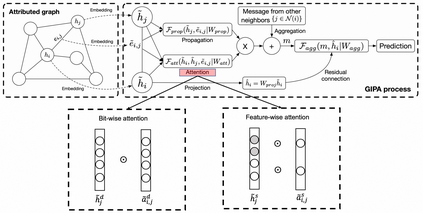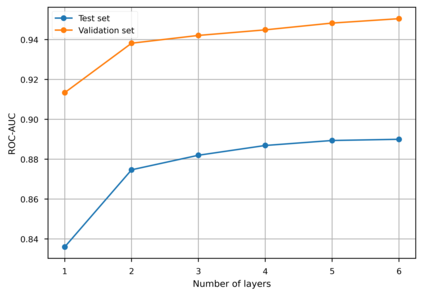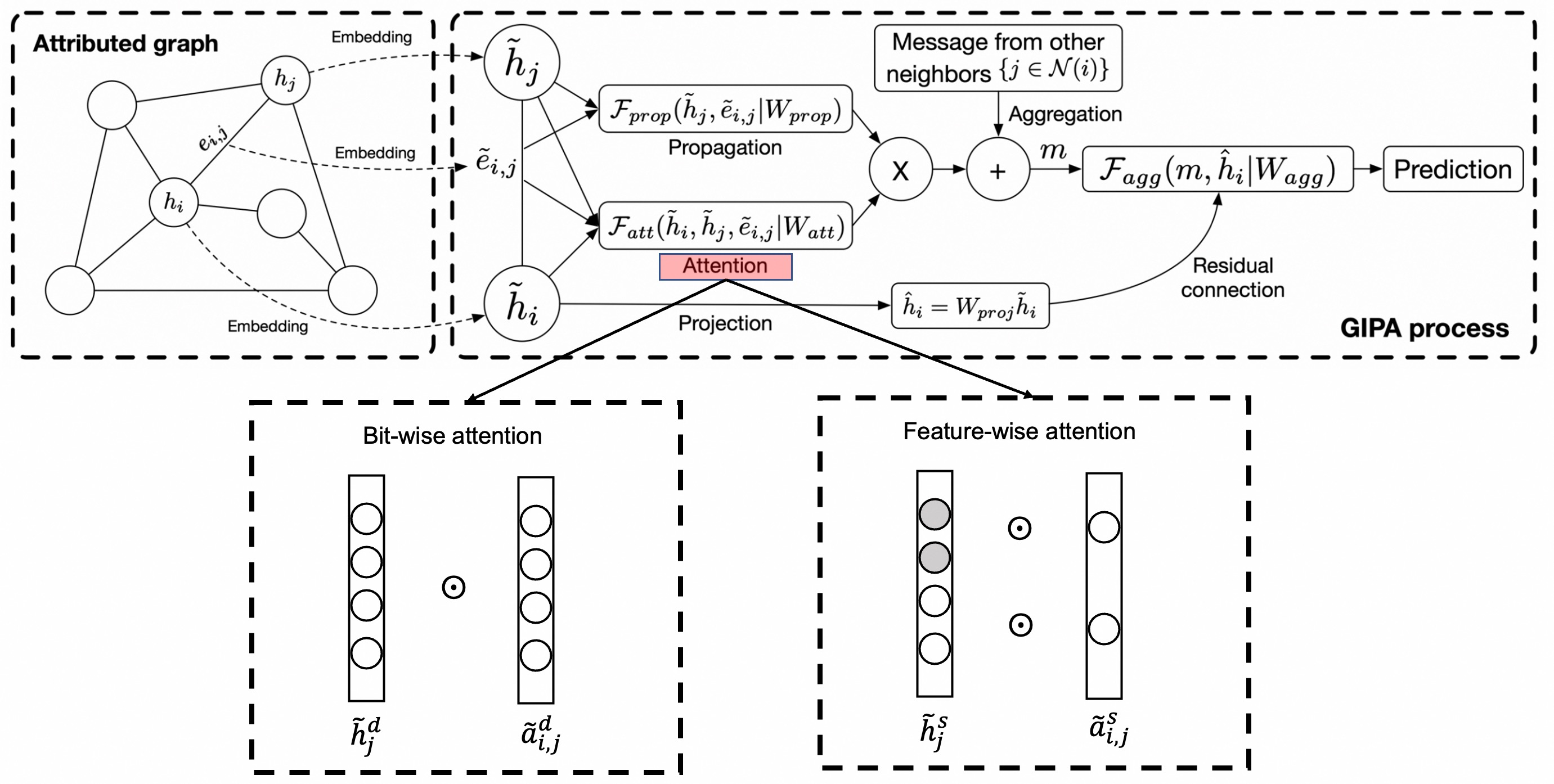Graph neural networks (GNNs) have been widely used in graph-structured data computation, showing promising performance in various applications such as node classification, link prediction, and network recommendation. Existing works mainly focus on node-wise correlation when doing weighted aggregation of neighboring nodes based on attention, such as dot product by the dense vectors of two nodes. This may cause conflicting noise in nodes to be propagated when doing information propagation. To solve this problem, we propose a General Information Propagation Algorithm (GIPA in short), which exploits more fine-grained information fusion including bit-wise and feature-wise correlations based on edge features in their propagation. Specifically, the bit-wise correlation calculates the element-wise attention weight through a multi-layer perceptron (MLP) based on the dense representations of two nodes and their edge; The feature-wise correlation is based on the one-hot representations of node attribute features for feature selection. We evaluate the performance of GIPA on the Open Graph Benchmark proteins (OGBN-proteins for short) dataset and the Alipay dataset of Alibaba. Experimental results reveal that GIPA outperforms the state-of-the-art models in terms of prediction accuracy, e.g., GIPA achieves an average ROC-AUC of $0.8901\pm 0.0011$, which is better than that of all the existing methods listed in the OGBN-proteins leaderboard.
翻译:图形结构化数据计算中广泛使用了图表形神经网络(GNNs),显示在节点分类、链接预测和网络建议等各种应用中有良好的性能。现有工作主要侧重于基于关注对相邻节点进行加权汇总时的节点相关性,如两个节点稠密矢量的点产品。这可能造成节点中自相矛盾的噪音在信息传播时传播。为了解决这个问题,我们提议采用通用信息促进算法(简称GIPA),它利用了更精细的混合信息,包括基于其传播中边缘特征的比特值和特性相关性。具体地说,根据两个节点及其边缘稠密的偏移矢量对多层次的偏移计算出元素偏重值。 特效相关性以用于选择特征的点偏差属性特性的一对位表示。我们评估了GIPA的公开基准质蛋白性(用于短期的点对位和特性的比分数- 以近点的比值值) 数据预估GIPA- 的当前GIPA- 的精确度模型, 和AIPA- 的实验性模型的比亚 的比亚平级的比亚值的数值的比亚值前值的数值更精确性。







